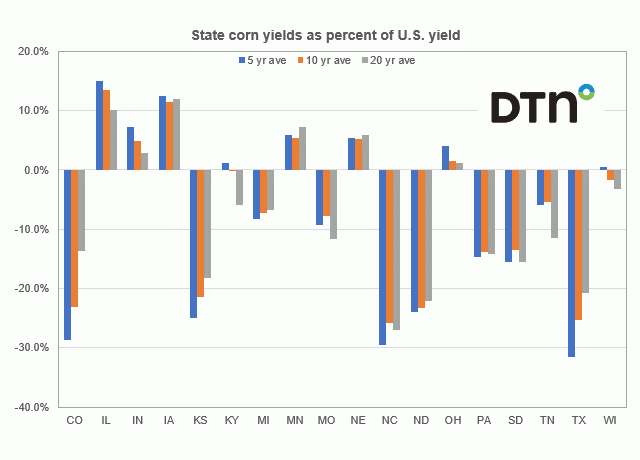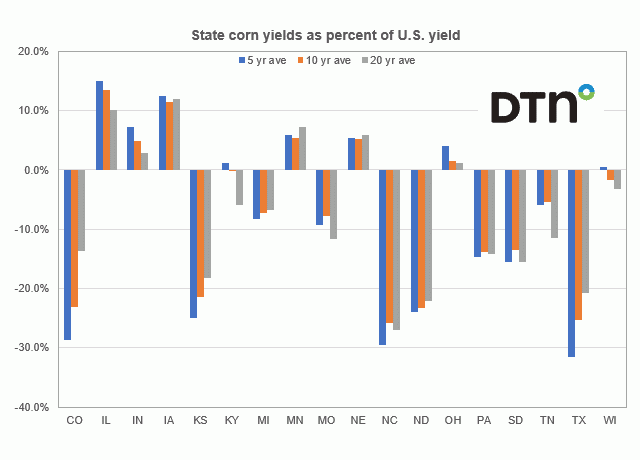Fundamentally Speaking
Historical Corn Yields
July corn futures have made new lows, now trading at the lowest levels since last July, linked in part to eroding export prospects as discussed in a recent blog piece.
New crop considerations are also at play as the forecast for seedings looking into early May appear favorable.
Keep in mind that the USDA planting intentions figure of 92 million acres if proven correct, combined with their initial yield forecast of 181.5 bushels per acre, a new record by far, could result in huge 2023 production.
Of course, it is a long way from now until harvest and we have seen over the past few years hopes of bumper production dashed by adverse weather be it flooding rains that delayed plantings, drought in key sections of the Corn Belt, high heat during pollination, derechos, freezes, you name it.
P[L1] D[0x0] M[300x250] OOP[F] ADUNIT[] T[]
We should note that some feel the reason why the national corn yield has not been that impressive in recent seasons is in addition to adverse weather, increasingly larger amounts of production are coming from some of the lower yielding states, especially in areas of the Plains.
For instance, states like Kansas and North Dakota have seen increased corn acreage sown at the expense of other crops that used to be traditionally seeded there such as spring wheat, minor oilseeds, sunflowers and sorghum to name a few.
Exploring this idea further, this chart shows the state yields of the top 18 corn producing states as a percent of the U.S. yield looking at the twenty, ten and five-year averages.
There really are only six states that have yields consistently above the U.S. yield and those are IL, IN, IA, MN, NE and OH.
The best yields are seen in Illinois where over the past five years, their corn yields have averaged 15.0% above the U.S. yield and this is even higher than the ten-year average of 13.5% better and the 20 year average of 10.1% better, so IL yields have improved relative to the rest of the country.
The same pattern is seen in IN and OH to a lesser extent.
On the other hand, yields relative to the U.S. have gotten progressively worse in a state like Colorado where the five year average is a state yield 28.6% below the U.S. yields and that is lower than the ten-year average of down 23.1% and the 20-year average of down just 13.7%.
Other states showing a similar pattern where recent yields compared to the U.S. yield have declined over the years includes KS, ND and TX, all in the Plains where drought conditions have been pervasive for years.
(c) Copyright 2023 DTN, LLC. All rights reserved.






Comments
To comment, please Log In or Join our Community .